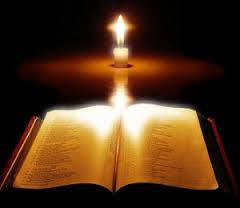Tradition
The ongoing life of God’s People is called Holy Tradition. The Holy Tradition of the Old Testament is expressed in the Old Testamental part of the Bible and in the ongoing life of the People of Israel until the birth of Christ. This tradition is fulfilled, completed and transcended in the time of the Messiah and in the Christian Church.

The New Testamental or Christian Tradition is also called the apostolic tradition and the tradition of the Church. The central written part of this tradition is the New Testamental writings in the Bible. The gospels and the other writings of the apostolic church form the heart of the Christian tradition and are the main written source and inspiration of all that developed in later ages.
This Christian tradition is given over from people to people, through space and time. Tradition as a word means exactly this: it is that which is “passed on” and “given over” from one to another. Holy Tradition is, therefore, that which is passed on and given over within the Church from the time of Christ’s apostles right down to the present day.
Although containing many written documents, Holy Tradition is not at all limited to what is written; it is not merely a body of literature. It is, on the contrary, the total life and experience of the entire Church transferred from place to place and from generation to generation. Tradition is the very life of the Church itself as it is inspired and guided by the Holy Spirit.
Not everything in the Church belongs to its Holy Tradition for not everything in the Church is done by the grace of the Holy Spirit, and not everything in the Church pertains essentially and necessarily to the Kingdom Of God. Some things in the Church are just temporal and temporary things, merely human customs and traditions of no eternal and everlasting value. Such things in themselves are not sinful or wrong. On the contrary, they may be very positive and very helpful to the life of the Church as long as they are not taken to be what they are not. Thus, it is very important in the Church to make the distinction between traditions which are merely earthly and human and passing away and the genuine Holy Tradition which pertains to the heavenly and eternal Kingdom of God.
It is also important to recognize that there are also things in the Church which not only do not belong to Holy Tradition, but which are not even to be counted among its positive human traditions. These things which are just sinful and wrong are brought into the life of the Church from the evil world. The Church in its human form, as an earthly institution, is not immune to the sins of its unholy members. These deviations and errors which creep into the life of the Church stand under the judgment and condemnation of the authentic and genuine Holy Tradition which comes from God.
Among the elements which make up the Holy Tradition of the Church, the Bible holds the first place. Next comes the Church’s liturgical life and its prayer, then its dogmatic decisions and the acts of its approved churchly councils, the writings of the church fathers, the lives of the saints, the canon laws, and finally the iconographic tradition together with the other inspired forms of creative artistic expression such as music and architecture. All of the elements of Holy Tradition are organically linked together in real life. None of them stands alone. None may be separated or isolated from the other or from the wholeness of the life of the Church. All come alive in the actual living of the life of the Church in every age and generation, in every time and place. As the Church continues to live by the inspiration of the Holy Spirit, the Holy Tradition of the Church will continue to grow and develop. This process will go on until the establishment of the Kingdom of God at the end of the ages.
